
* Corresponding author.
E-mail address: devduttchaturvedi@gmail.com (D. Chaturvedi)
© 2017 Growing Science Ltd. All rights reserved.
doi: 10.5267/j.ccl.2017.7.001
Current Chemistry Letters 6 (2017) 143–150
Contents lists available at GrowingScience
Current Chemistry Letters
homepage: www.GrowingScience.com
Triton-B catalyzed, efficient and solvent-free approach for the synthesis of
dithiocarbamates
Sadaf Zaidia, Amit K. Chaturvedib, Nidhi Singha and Devdutt Chaturvedia,c*
aDepartment of Applied Chemistry, Amity School of Applied Sciences, Amity University Uttar Pradesh (AUUP), Lucknow Campus, Lucknow-226028, U.
P., India
bDepartment of Chemistry, J. S. University, Shikohabad-283135, Firozabad, U. P., India.
cDepartment of Chemistry, School of Physical & Material Sciences, Mahatma Gandhi Central University, Motihari-845401(East Champaran), Bihar,
India
C H R O N I C L E A B S T R A C T
Article history:
Received November 14, 2016
Received in revised form
June 20, 2017
Accepted July 4, 2017
Available online
July 5, 2017
A novel one-pot, solvent-free method for the synthesis of dithiocarbamates was developed
through the reaction of corresponding alkyl halides, amines and carbon disulfide employing
catalytic amount of benzyl trimethyl ammonium hydroxide (Triton-B). The reaction conditions
are milder with extremely simple work-up procedures than the reported methods, afforded high
yields (82-98%) of the desired products.
© 2017 Growin
g
Science Ltd. All ri
g
hts reserved.
Keywords:
Amines
Alkyl halides
Carbon disulfide
Triton-B
Dithiocarbamates
1. Introduction
Organic dithiocarbamates have extensively been used as agrochemicals,1
pharmaceuticals,2intermediates in organic synthesis,3 protection of amino groups in peptide chemistry,4
linkers in solid phase organic synthesis,5 radical precursors in free-radical chemistry6and synthesis of
ionic liquids.7 Furthermore, different transition metal complexes of dithiocarbamates have been
synthesized for various studies, primarily because of their applications as organic superconductors.8In
recent years, dithiocarbamates have been emerged as a novel class of potential agrochemicals (e. g.
pesticides,9 herbicides,10 insecticides,11 fungicides 12etc.) such as carbamorph, ziram, benzathiazole
derivatives etc.(Fig. 1). As-pharmaceuticals, they have been used as drugs and prodrugs for the
different type of biological activities such as anti-microbial,13 anticancer,14 antiprotozoal,15
antileprosy,16antitubercular,17 anti-fungal,18 anti-alzheimer,19 and contraceptive agents 20etc.
Furthermore, recently it has been realized through various published reports that by incorporating
dithiocarbamate linkage into structurally diverse biologically potent synthetic/semisynthetic/natural

144
molecules may lead to manifold increase in biological activities.21As a useful synthon, organic
dithiocarbamates have been extensively used for the synthesis of structurally diverse biological potent
scaffolds such as isothiocyanates,22 thiourea,23 cynamide,24 dithiobenzophene,25 glycosides,26 amide,27
dicarboxylates,28 benzimidazole,29 carbamate,30 pyran,31 flavonoids32 etc. In view of their tremendous
importance and wide applications, their syntheses have gained considerable attention, and therefore
have become a focus of synthetic organic chemistry.
Traditional synthesis of organic dithiocarbamates involves use of phosgene33 and its derivatives.34
However, these methods are associated with several drawbacks like use of costly and toxic reagents
such as thiophosgene and its derivatives, longer reaction time and lesser yield. Therefore, their
syntheses has been changed from harmful reagents to abundantly available, cheap and safe reagent like
carbon disulfide.35 However, their formation using carbon disulfide employed harsh reaction conditions
such a use of strong bases, higher reaction temperatures and longer reaction times.36 Therefore, there
is still need for the development of safer and efficient synthetic protocols for the syntheses of
dithiocarbamates. Our group has been engaged from past several years for the development of new
methodologies for the preparation of carbamates, dithiocarbamates and related compounds using cheap,
abundantly available and safe reagents like carbon dioxide and carbon disulphide respectively.37 In
recent years, we found that Triton-B has emerged as a best catalyst for the synthesis of carbamates,
dithiocarbamates, carbazates, dithiocarbazates, dithiocarbonates employing a variety of reagents and
catalytic systems.38 In the present communication, we report here an efficient and novel, one-pot,
solvent-free synthesis ofdithiocarbamates starting from their corresponding alkyl halides, amines
employing Triton B/CS2 system.
2. Results and Discussion
In connection with our ongoing interest pertaining to the use of Triton-B (Fig. 1.) for the synthesis
of carbamates, dithiocarbamates, carbazates, dithiocarbazates and dithiocarbonates (xanthates).38 In the
present paper, we wish to report a simple and effective one-pot procedure for the synthesis
ofdithiocarbamates,through the nucleophilic attack of S- ion of monoalkylammonium alkyl
dithiocarbamate ion 2 (Figure 1.) upon the carbocation, generated from the electrophilic carbon of the
corresponding alkyl halide (Scheme 1.). Thus, a mixture of amine and CS2 were taken without any
solvent and Triton-B was added into it with constant stirring at room temperature. It has been reported
by our group that by reacting two molar ratio of amine with carbon dioxide afforded the corresponding
monoalkylammonium alkyl carbamate (MAAAC) ion 1, by adopting similar approach,
monoalkylammonium alkyldithiocarbamate (MAAADC) ion 2 should be obtained through reaction of
two molar equivalents of amine with CS2 (Fig. 1.).
C
O
NHR C
S
NH
R
RNH
3
S
12
RNH
3
O
Fig. 1. Formation of MAAAC 1 & MAAADC 2 ions
CS2 is more reactive than CO2, therefore thereaction was tried at room temperature. It has been
observed that the nucleophilicity of 2 could be increased by using basic phase transfer catalyst (PTC)
like Triton-B. The nucleophilic attack of 2 to the electrophilic carbon of the corresponding alkyl halide
may led to the corresponding dithiocarbamate (Scheme 1). The confirmation of product was made
based on the spectroscopic and analytical data with our previously synthesized authentic
dithiocarbamate. It is important to note here that amine used for this reaction should have at least one
available hydrogen atom to help in the formation of 2. Therefore, this reaction could not be successful
for the dithiocarbamates synthesized from tertiary amines which do not have at least one hydrogen
atom.

S. Zaidi et al. / Current Chemistry Letters 6 (2017)
145
NH
R
4
R
5
2+CS
2
Triton B
NH
2
R
4
R
5
S C
S
N
R
5
R
4
X R
2
R
1
R
3
R
2
S
R
1
R
3
C
S
N
R
5
R
4
+NH
2
X
R
4
R
5
I
MAAADC ion
Scheme 1. Proposed mechanism of formation of dithiocarbamates of general formula I
In order to study the effects of various phase transfer catalysts (PTC) on the yield of the reaction,
a reaction of phenyl ethyl chloride with n-butyl amine employing various phase transfer catalysts (PTC)
such as tetra-n-butyl ammonium iodide (TBAI), tetra-n-butyl ammonium bromide (TBAB), tetra-n-
butyl ammonium chloride (TBAC), tetra-n-butyl ammonium hydrogen sulfate (TBAHS), tetra-n-butyl
ammonium hydrogen carbonate (TBAHC), and benzyl trimethyl ammonium hydroxide (Triton-B) etc.
was tried. We found that Triton-B is the best in achieving high yields of the desired dithiocarbamates
(Table 1).
Table 1. Effect of various phase transfer catalysts on the yield of dithiocarbamates
entry Name of PTC Time (hr.) Yield (%)
1 TBAI 2 89
2 TBAB 2 88
3 TBAC 2.5 86
4 TBAHS 2.5 82
5 TBAHC 283
6 Triton B 1.5 91
In order to study the effect of halide group (I, Cl, Br) of corresponding alkyl halide on the yield of
the dithiocarbamates, we tried a reaction of each of 2-chloro/bromo/iodo ethyl benzene with n-butyl
amine employing Triton-B/CS2 system at room temperature, wherein we found that alkyl halide bearing
iodide group gives best yields as compared to corresponding chloride and bromide compounds (Table
2).
Table 2. Effect of different alkyl halides in the formation of dithiocarbamates I
R1 R
2 R
3 R
4 R
5 X Time Yield
Ph-CH2 H H n-C4H9 H I 1 92
Ph-CH2HHn-C4H9 HBr1.5 90
Ph-CH2HHn-C4H9 H I1.5 85
After optimizing the reaction conditions, this reaction was employed to a variety of primary,
secondary, and tert. alkyl halides with various kinds of primary, secondary aliphatic, alicyclic,
heterocyclic, aromatic amines employing Triton-B/CS2 system at room temperature (Table 3). This
reaction works well with primary alkyl halides in comparison to secondary and tertiary alkyl halides.
Steric hindrance could be the reason for lesser yield of secondary or tertiary alkyl halides. It has also
been observed that aromatic amines with electron releasing group (EWG) like p-anisidine and p-
toluedine afforded high yields and lesser reaction time as compared to aromatic amine without EWG

146
like aniline. Also, dithiocarbamates of cyclic amines such as cyclohexyl amine was obtained in lesser
yields as compared to aliphatic long chain amines. The spectral characterization of all the
dithiocarbamates obtained from various amines and alkyl halides were confirmed through the data of
authentic dithiocarbamates prepared in our Laboratory from various starting materials .37f, 38b, 38d
XR
2
R
1
R
3
+NH
R
4
R
5
SR
2
R
1
R
3
N
S
R
5
R
4
I
a
Scheme 1. Reagents and conditions: (a) Triton B, CS2, rt, 1.5-2.5 hr., 82-98%
Table 3. Conversion of alkyl halides into dithiocarbamates of general formula I
Comp.
No.
R1
R2
R3
R4
R5
X
Time
(hrs)
Yield
Refs.
1. 2-
N
aphthyloxypropyl H Hn-C4H9HCl 1.5 96 38
d
2. 2-NaphthyloxyethylHHc-C6H13 H Cl 2 89 38d
3. 2-NaphthyloxyethylHH R4 = R5 = Morpholine Cl 2 8 38d
4. 2-
N
aphthyloxyethyl H H
R
4= R5= Pyrrolidine Cl 2 86 38b
5. 2-Naphthyloxyethyl H H n-C3H7 n-C3H7 Cl 2 85 38b
6. n-C3H7 HHn-C8H17 H I 2.5 87 38
d
7. (CH3)2CH.CH2 HHn-C8H17 H I 2 90 38d
8. CH3(CH2)3 HHn-C4H9 HI2 92 38d
9. CH3(CH2)4 HHc-C6H11 HCl 2.5 88 38
d
10. CH3(CH2)5 HHPhCH2 HCl 2 90 37f
11. CH3(CH2)6 HH4-MePh HBr 2 92 38d
12. CH3(CH2)8 HHn-C6H13 H I 1.5 98 38d
13. PhCH2 HHn-C4H9 H Cl 2 91 38d
14. PhCH2.CH2 HHn-C6H13 HCl 2 94 38d
15. PhCH2 HHi-C3H7 i-C3H7Cl 2 89 38d
16. 2-Naphthyloxyethyl HH4-MeOPh H Cl 2 88 38d
17. n-C4H9 n-C4H9Hn-C8H17 H Cl 2.5 84 38d
18. n-C4H9 n-C4H9n-C4H9n-C12H25 HCl 2 94 38d
19. n-C6H11 H HPh Br I2.5 82 37f
20. n-C5H11 H H Cyclohexyl H Cl 2.5 83 38b
21. n-C4H9 H H PhCH2CH2 H I 2 89 38b
22. n-C5H11 H H Ph.CH2.CH2.CH2 H Cl 2 92 38b
3. Conclusions
We have developed a convenient and efficient protocol for one-pot, solvent-free coupling of various
primary and secondarysubstituted aliphatic, aromatic, alicyclic, heterocyclic amineswith a variety of
primary, secondary and tertiary alkyl halides employing Triton-B/CS2 system. This method generates
the corresponding dithiocarbamates in good to excellent yields. Furthermore, this method exhibits
substrate versatility, mild reaction conditions and experimental convenience. This synthetic protocol
developed in our laboratory is believed to offer a more general method for the formation of carbon-
oxygen bonds essential to numerous organic syntheses.
4. Experimental
Chemicals were procured from Merck, Aldrich, and Fluka chemical companies. Reactions were
carried out under an atmosphere of Argon. Infra-Red (IR) spectra 4000-200 cm-1 were recorded on
Bomem MB-104–FTIR spectrophotometer using neat technique, whereas NMRs were scanned on AC-
300F, NMR (300 MHz), instrument using CDCl3 and some other deutrated solvents and TMS as internal

S. Zaidi et al. / Current Chemistry Letters 6 (2017)
147
standard. Elemental analysis were conducted by means of a Carlo-Erba EA 1110-CNNO-S analyser
and agreed favourably with calculated values.
4.1 Typical experimental procedure for the synthesis of dithiocarbamates
An equimolar amount (6mmol) ofTriton-B and CS2 was and was allowed to stir20 min at room
temperature. Amine (5 mmol) was added and the reaction was continued at rt for 1 h. Now
corresponding alkyl halide (2 m mol) compound were added. The reaction was further continued until
completion (Table 1). The reaction mixture was poured into 50 cm3 distilled H2O and extracted with
ethyl acetate thrice. The organic layer was separated, dried (Na2SO4), and concentrated to get the
desired compound.
4.2 Data of selected compounds.
[4-(2-Naphthyloxy)but-1-yl] n-butyldithiocarbamate(1):(Table 2, entry 1)38b
M.p.106oC. IR (KBr): ν = 670 (C–S), 1114 (C=S), 1474 (Ar), 1510 (Ar), 1609 (Ar), 2874 (CH),
2937(CH), 3418 (NH) cm-1;1H NMR (CDCl3): δ = 0.93–0.97 (t, CH3,J = 7.1Hz), 1.30–1.34 (m,
CH2CH3),1.53–1.56 (m, CH2CH2CH3), 1.70–1.72 (m, naphthyl-O–CH2CH2, J = 6.5 Hz), 1.95–1.98 (m,
S–CH2CH2), 2.0 (br, NH), 2.63–2.66 (m, NHCH2, J = 7.2Hz), 2.84–2.88 (t, CH2–S–C=S), 4.01–4.04
(t, CH2–O-naphthyl), 6.97–7.64 (m, Ar–H) ppm. MS: m/z = 347.
3-(2-Naphthyloxy)prop-1-yl] n-hexyldithiocarbamate (2):(Table 2, entry 2)38b
M.p.129oC; IR (KBr): ν = 664 (C–S), 1116 (C=S), 1474 (Ar), 1512 (Ar), 1601 (Ar), 2874 (CH), 2937
(CH), 3395 (NH) cm_1;1H NMR (CDCl3): δ = 0.92–0.96 (t, CH3, J = 7.2 Hz), 1.27–1.29 (m,
CH2CH2CH2CH3), 1.30–1.34 (m, CH2CH3), 1.53–1.56 (m, CH2CH2CH3), 2.2 (br, NH), 2.36–2.40 (m,
naphthyl-O–CH2CH2CH2-, J = 6.5 Hz), 2.63–2.66 (m, NHCH2, J = 7.2Hz), 2.83–2.87 (t, CH2–S–C=S),
4.01–4.04 (t, CH2–O-naphthyl),6.97–7.64 (m, Ar–H) ppm. MS: m/z = 361.
Acknowledgements
Author is thankful to Pro-Vice Chancellor and Dean, Research (Science and Technology), Amity
University Uttar Pradesh (AUUP), Lucknow Campus, Lucknow, U. P., for their constant
encouragement and support for research. Financial support from the Department of Science and
Technology (DST), Govt. of India (Grant No.SR/FT/CS-147/2010) is gratefully acknowledged. The
authors confirm that there is no conflict of interest with the commercial identities used inside the
manuscript.
References
1. (a) Lambert C. (2004) Sulphur chemistry in crop protection. J. Sulphur Chem., 25(1) 39-62; (b)
Eng G., Song X., Duong Q., Strickman D., Glass J., May L. (2003) Synthesis, structure
characterisation and insecticidal activity of some triorganotin dithiocarbamates. Appl. Organomet.
Chem., 17 (4) 218-225; (c) Senkbeil S., Lafleur J. P., Jensen T. G., Kutter J. P. (2012) Gold
nanoparticle-based fluorescent sensor for the analysis of dithiocarbamate pesticide in water. Min.
System Chem. Life Sci., 1423-1425.
2. (a) Cao S. L., Feng Y. P., Jiang Y. Y., Liu S. Y., Ding G. Y., Li R. T. (2005) Synthesis and in-
vitro antitumor activity of 4(3H)-quinazolinone derivatives with dithiocarbamate side chains.
Bioorg. Med. Chem. Lett., 15 (7) 1915-1917; (b) Cao S. L., Wang Y., Zhu L., Liao J., Guo Y. W.,
Chen L. L., Liu H. Q., Xu X. (2010) Synthesis and in-vitro antitumor activity of 4(3H)-
quinazolinone derivatives with dithiocarbamate side chains. Eur. J. Med. Chem., 45 (9) 3850-
3857; (c) Cao S. L., Han Y., Yuan C. Z., Wang Y., Xiahou Z. K., Liao J., Gao R. T., Mao B. B.,
Zhao B. L., Li, Z. F., Xu X. (2013) Synthesis and antiproliferative activity of 4-substituted-
piperazine-1-carbodithioate derivatives of 2,4-diaminoquinazoline. Eur. J. Med. Chem., 64 401-
409; (d) Cvek B., Dvorak Z. (2007) Targeting of nuclear factor-κB and proteasome by

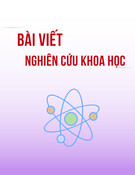







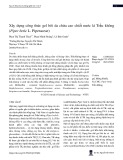

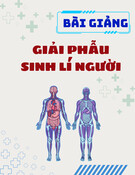
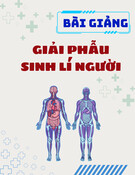
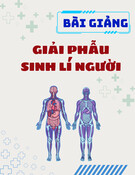
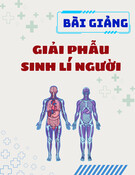
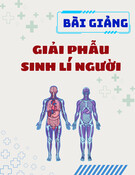
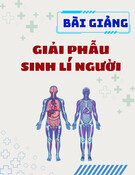

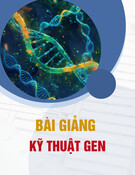
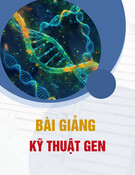
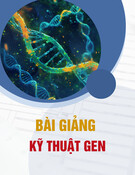
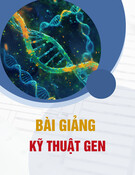
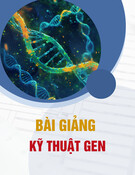

![Hướng dẫn giải chi tiết bài tập phân li, phân li độc lập: Tài liệu [mới nhất]](https://cdn.tailieu.vn/images/document/thumbnail/2025/20251204/lethu2868@gmail.com/135x160/84711764814448.jpg)

